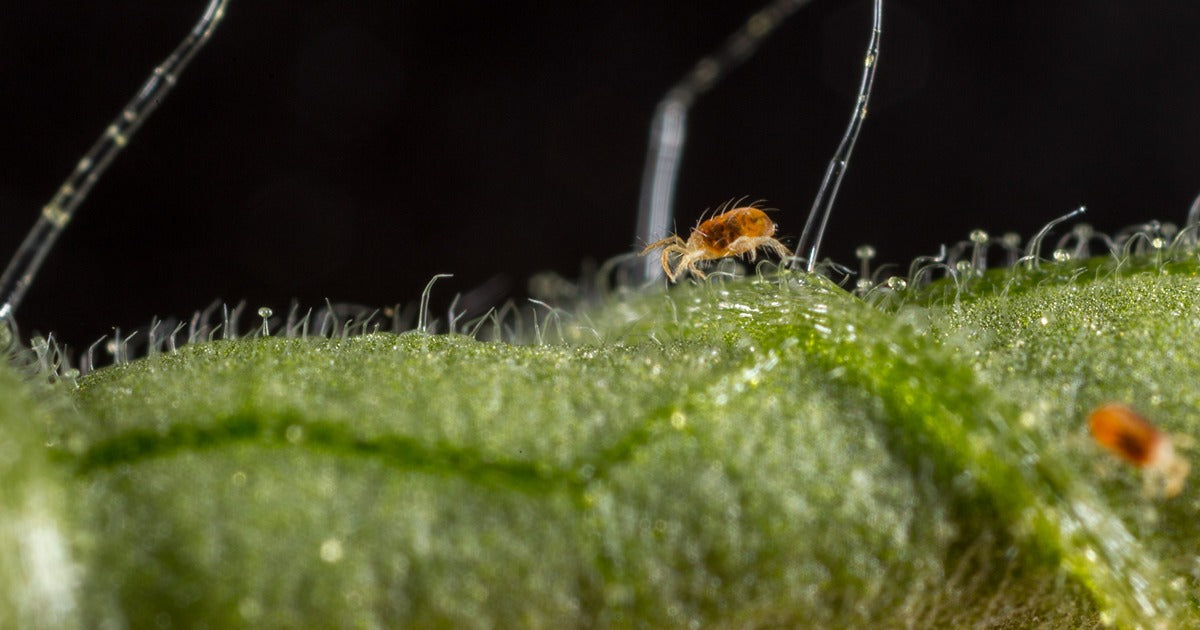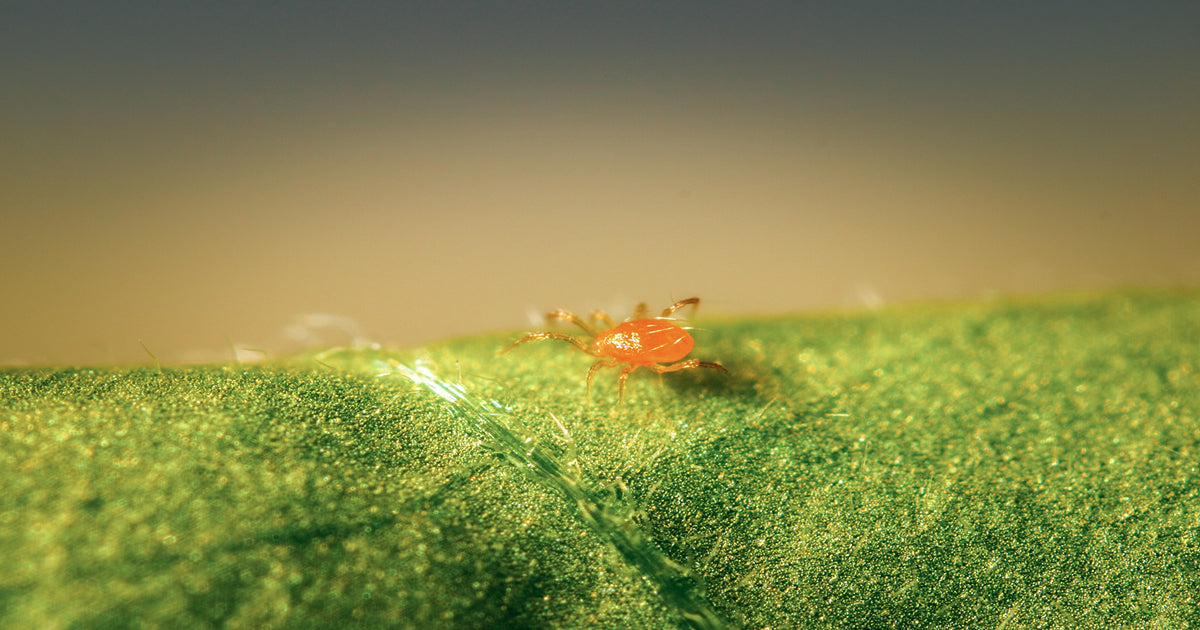
Spider Mites Are An Acquired Taste & Ladybirds Are Not That Interested...
There appears to be some widely circulated misinformation, 'fake news' if you like, among the growing community that adult ladybirds (Adalia bipunctata) are an effective predator of Red Spider Mite (Tetranychus urticae). While adult Ladybirds are a popular, and effective, biological control, they are not best suited to tackle infestations of Spider Mite and we at Dragonfli would like to set the record straight.

An Adalia bipunctata Ladybird seen munching on its preferred food source, the Aphid.
5 Reasons Ladybirds Should Not Be Used To Control Spider Mite
Here are a 5 key reasons why adult Ladybirds should not be used in an attempt to control Spider Mite infestations:
1. Spider Mites are not the Ladybird's preferred food source
Although Ladybirds may eat a small number of these pests, they are not their preferred food source. This means ladybirds will not feed on Spider Mites voraciously and are very likely to fly away in search of a more favourable food source.
2. Spider Mite populations increase too quickly for Ladybirds
The Ladybird life cycle, from egg to adult, can take several weeks. Spider Mite populations can double in less than 3 days, and increase tenfold within 10 days. The rapid population increase of Spider Mites, compared with the slow population increase of Ladybirds is a total mismatch, preventing any form of control.

Spider Mite populations develop too quickly for Ladybirds to control.
3. Ladybirds will not eat enough Spider Mites to quell infestations
Ladybirds will not eat enough Spider Mites. Due to the rapid population increase of spider mite infestations, coupled with the ladybirds lack of interest in Spider Mite as a food source, pest populations can increase rapidly.
4. Ladybirds are too sensitive to temperature and light conditions
Ladybirds are sensitive to temperature and day length so may go into hibernation or choose to migrate under certain conditions. This may include growth under lights, or in heated greenhouses during the winter.

Ladybirds are more likely to migrate and fly away from conditions in which Spider Mite thrive.
5. Consistent Ladybird application will be an expensive commitment
Compared with specially bred Spider Mite predators, Ladybirds are a very expensive commitment. This is particularly evident when considering the ratio of Spider Mites eaten per predator. Phytoseiulus persimilis predators, for example, will consume up to 5 adult Spider Mites and 20 young, or eggs, per day!
Choose From Our Range Of Dedicated Spider Mite Predators Instead
There are other predators much better suited for efficient and targeted control of Red Spider Mite, as used by professional growers across the country and worldwide.
Our Phytoseiulus persimilis - Spider Mite Curative System is one of the oldest biological controls used against Spider Mite and it continues to be the number one treatment for control of the pest. Phytoseiulus predatory mites are capable of consuming five adult Spider Mites and 20m Spider Mite larvae each day. This is a capability which enables the predator to curb rapid rises in Spider Mite populations and will help you to end infestations.

A Phytoseiulus persimilis predator pictured consuming a Spider Mite pest.
We have a range of further dedicated Spider Mite biological controls in the form of our Amblyseius californicus predators, and our Amblyseius andersoni predators. Both these predators have different benefits and particularities which suit variations in temperature conditions, Spider Mite infestation levels and life cycle phases.
Aphids Are The Meal Of Choice For Ladybirds & Their Larvae
Ladybirds are simply not a suitable biological control when treating Spider Mite. If you have an Aphid infestation, however, then Ladybirds, and their larvae, do come into their own as brilliant predators of nearly all Aphid pest species. Ladybird larvae in particular can consume up to 100 Aphids per day!

A Ladybird larvae sizing up its next meal.




